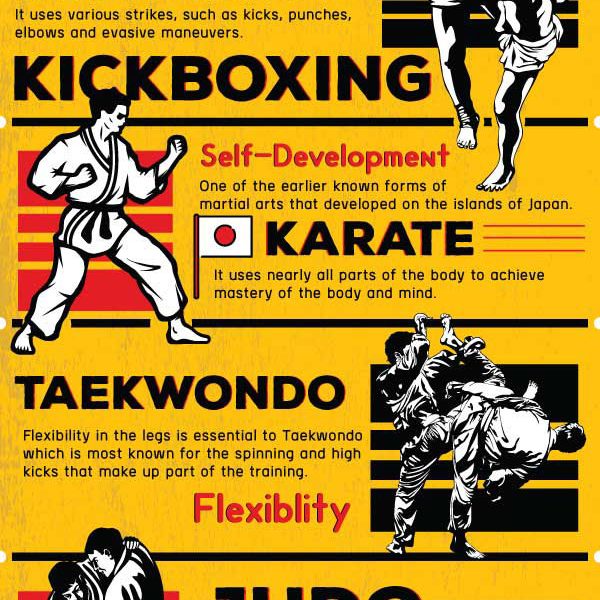The History And Philosophy Of Fighting Style: A Deep Dive
The History And Philosophy Of Fighting Style: A Deep Dive
Blog Article
Highly recommended Web-site -Gentry Francis
Step into the old globe where martial arts were substantiated of necessity in varied regions. Cultures crafted special battling designs linked with historical contexts. Strategies developed over centuries through dedicated technique and social exchanges. Today, contemporary martial arts mix traditional components for maximum effectiveness. Philosophically, martial arts emphasize technique, self-improvement, and harmony. Regard, humbleness, and equilibrium are foundational principles guiding professionals towards development and strength. Discover the depths of this abundant background and viewpoint to reveal the extensive impacts shaping this enduring technique.
Beginnings of Fighting Style
Fighting style originated in numerous areas all over the world, developing as practical battle systems to defend against risks. These ancient combating designs were established out of requirement, with each culture crafting strategies suited to their distinct settings and difficulties. From the grappling arts of Jujutsu in Japan to the striking techniques of Kung Fu in China, martial arts were deeply linked with the historic, social, and cultural textile of their particular societies.
In Japan, the samurai course polished martial arts like Kenjutsu, the art of the sword, which later developed right into the much more promoted type of Kendo. At the same time, in Brazil, Capoeira emerged as a blend of dancing and fight, developed by enslaved Africans as a means to withstand injustice. Each fighting style brings with it an abundant background and viewpoint, showing the worths and ideas of the people that practiced them.
As you delve into the origins of martial arts, you discover a tapestry of human resourcefulness, resilience, and the stubborn spirit of warriors throughout time.
Evolution of Methods
With centuries of method and refinement, combat techniques within various martial arts have gone through a profound advancement. From old designs like Martial art and Martial arts to much more modern-day disciplines such as Brazilian Jiu-Jitsu and Krav Maga, the evolution of techniques has been driven by a combination of cultural influences, functional applications, and technological advancements.
One significant aspect of this development is the cross-pollination of techniques between various martial arts. For example, strategies from traditional Japanese Jiu-Jitsu were included right into the creation of Judo by Jigoro Kano in the late 19th century. This blending of styles has actually led to the advancement of crossbreed martial arts like Mixed Martial Arts (MMA), which integrate components of striking, grappling, and submission methods.
Furthermore, the evolution of strategies has been formed by the enhancing focus on efficiency and performance in combat. Professionals have continuously looked for to improve their methods via extensive training, testing, and competitors, resulting in the growth of highly specialized and reliable combating designs. In general, the evolution of strategies in martial arts shows the vibrant nature of fight and the recurring mission for enhancement and advancement.
Philosophical Structures
Discovering the underlying philosophical concepts of martial arts provides understanding into their core worths and guiding beliefs. At the heart of lots of martial arts techniques is the concept of technique itself. By educating your mind and body to serve as one natural system, you grow self-control that prolongs past the dojo or health club into daily life. This discipline incorporates regard, humbleness, and self-discipline, forming not just your physical abilities however likewise your character.
One more essential philosophical foundation in martial arts is the idea of constant self-improvement. The trip of grasping a martial art is relentless, with specialists continuously making every effort to far better themselves, both literally and emotionally. This focus on development cultivates durability, willpower, and a development state of mind that can be put on all aspects of life.
Furthermore, martial arts emphasize the value of harmony and equilibrium. Techniques are designed to utilize a challenger's power against them, highlighting the concept of generating and rerouting pressure as opposed to satisfying it head-on. This approach encompasses interpersonal connections, advertising relaxed resolutions and good understanding. By accepting these thoughtful foundations, martial musicians not only enhance their battle skills yet also cultivate a way of living fixated personal development, regard, and consistency.
Final thought
Finally, the history and philosophy of martial arts use a rich tapestry of custom, discipline, and self-improvement.
Take for example the story of Bruce Lee, that reinvented martial arts by blending different designs and ideologies to produce his own distinct kind of Jeet Kune Do.
With devotion and technology, martial artists remain to push boundaries and motivate others to reach their full possibility both in fight and in life.
